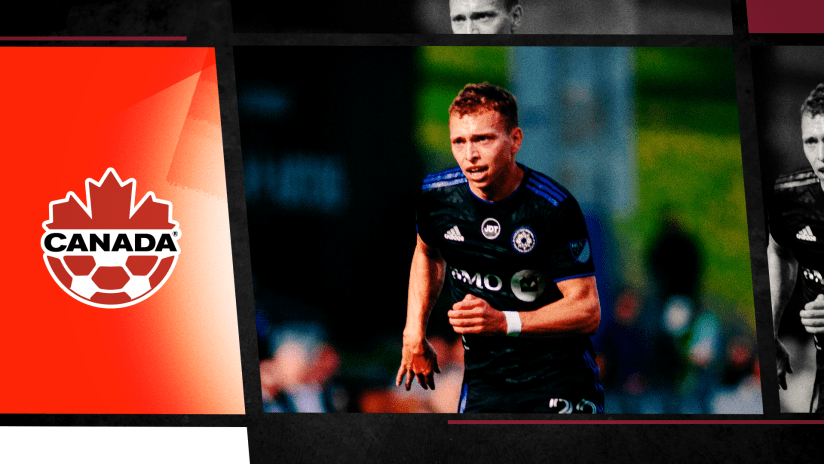We’re less than a month away from the 2022 World Cup in Qatar, and Canada are only a couple of weeks out from their pre-tournament friendlies against Bahrain (Nov. 11) and Japan (Nov. 17). That leaves very little time for players to stake their claims.
While the likes of Alphonso Davies and Jonathan David have stayed hot, a couple of players on the fringes have returned from injury. They’ll be hoping one final push will be enough to crack the final 26-man squad competing in Group F this November.
On both ends of the spectrum, here are some encouraging and worrisome signs among the player pool.
Comforts
We’re running out of superlatives to describe Davies’ season.
The growing comfort in drifting inside and attempting shots or feeding his Bayern Munich teammates into the box after meandering into the left half-space must be a dream for Canada coach John Herdman.
Clearly, it’s a much different task to be among several world-class players in a Bayern squad compared to shouldering the burden for Canada at their first men’s World Cup in 36 years. However, the symmetry between Davies’ roles for club and country will make this transition to the big dance so much simpler.
The Vancouver Whitecaps FC homegrown export already has the creative freedom to occupy whatever position he pleases to influence games. The fact he’s also doing this at Bayern highlights his importance to the team while also providing the best platform for Davies to truly be Canada’s best player in Qatar.
That’ll delight Herdman if this continues for the next few weeks and beyond as the road to co-hosting in 2026 begins, too.
There’s yet to be a single off-day for Jonathan David through 12 games at Lille, which is encouraging for his prospects at the World Cup, especially with a potential marquee transfer out of Ligue 1 looming.
Even in the few matches David hasn’t scored in this season, he’s continually producing. His shots, key passes and touches in the box have all increased from a year ago. With no other in-form Canadian strikers to speak of, the 22-year-old must maintain this incredibly high level of play.
He’s got nine goals and three assists on the year, sitting only behind Paris Saint-Germain’s world-class duo of Neymar and Kylian Mbappe atop the French first division’s scoring charts.
There are many Canadians who are poised for a breakout tournament, but few will likely catch the eye more than Alistair Johnston considering his combination of defensive qualities, versatility and vision.
All season long with CF Montréal, Johnston latched onto long switches on the right flank and controlled them with ease before launching inch-perfect crosses into the opposing box. That swiftness and fluidity could aid Canada at the World Cup, especially with Tajon Buchanan or Junior Hoilett underlapping or overlapping with Johnston to provide an additional threat.
This isn’t news to anyone who has watched Montréal games since the 24-year-old arrived in a trade from Nashville SC. Johnston has been heavily involved in the final third and has improved tremendously with his offensive instincts while working under head coach Wilfried Nancy.
That’s rubbed off on Johnston’s national team form, too. His budding partnership with Buchanan was thriving in June during the Concacaf Nations League victory over Curacao in Vancouver, so there’s already chemistry established.
Concerns
As more Besiktas games pass without Atiba Hutchinson featuring in them, the concern grows for Canada.
Hutchinson, who could become the second-oldest outfield player in World Cup history at 39 years old, has not played a competitive match since June due to a pre-season bone bruise. He is training, but has not been risked as of yet.
Only a handful of Turkish Süper Lig games remain for Hutchinson to gain fitness. The Toronto FC midfield duo of Jonathan Osorio and Mark-Anthony Kaye hasn't played in weeks, either, so Canada can’t afford any other setbacks.
It’s especially crucial to have Hutchinson in shape. Ideally, the veteran will orchestrate games from deep-lying areas and help Canada build confidently from the back without any trepidation. That alleviates the burden on someone like Chaves center back Steven Vitoria, who’s sometimes frazzled when pressed by opponents while on the ball.
It also enables Stephen Eustaquio to be deployed as a box-to-box midfielder and influence games higher up the pitch as he does with Porto.
These are massive asterisks at this stage. Herdman told the assembled media ahead of the September window Hutchinson was expected to return by the end of October. We’re about a week away from that due date, so until the captain is patrolling the pitch for Besiktas, he will remain one of the biggest question marks with the World Cup on the horizon.
In the Eastern Conference Semifinals on Sunday, New York City FC’s 3-1 win over CF Montréal was a stark reminder of Kamal Miller's biggest weakness: his lack of speed on the turn.
Laying the first goal at Miller’s feet is unfair. There was no support, so the Cityzens executed overlaps with little resistance as the 25-year-old defender needed to track two players at once.
The second goal, on the other hand, saw Miller more at fault.
The slight moment of hesitation to engage with Santiago Rodriguez on the initial counter, and the decision to not foul Rodriguez after catching up to him and dropping back into the backline to potentially play Heber onside, was a self-inflicted series of events.
However, both goals – even the first one – are perfect examples of this Achilles’ heel. When there’s adequate cover around Miller, he won’t be exposed. He seldom is when he plays for Canada thanks to the responsible and sturdy Sam Adekugbe occupying the left flank.
Get Miller isolated one-on-one in space, though, and there’s a chance he’ll struggle.
That’s why it’s vital Canada must not slack in their off-the-ball responsibilities at the World Cup because just like NYCFC on Sunday, Les Rouges’ Group F opponents – Belgium, Croatia and Morocco – won’t show any mercy.
There’s a reason why seeing a potential attacking trio of Davies, David and Buchanan (or Hoilett) is a realistic possibility.
It all traces back to Cyle Larin.
The Canadian men’s national team’s all-time leading scorer and the Golden Boot winner from Concacaf World Cup Qualifying has not stepped foot on the pitch for Club Brugge since Oct. 8. That Belgian league appearance broke a month-long stalemate of riding the bench.
Since then, though, Larin hasn’t even made a matchday squad as he finds himself fifth in the pecking order at best.
Inconsistent minutes, or no playing time at all, hinders every player, but Larin feels those effects the most. At the 2019 Gold Cup, amid an uncertain time in his Besiktas career, the former Orlando City SC forward had a noticeably heavier touch, was slower to react to certain situations in a game, and it pushed him to the outskirts of the national team.
Once he regained form, culminating with two brilliant seasons in Turkey from 2020 until this May, Larin was like a man possessed. His goals propelled Canada to the World Cup and he was a guaranteed starter through the entire qualifying cycle.
Now, less than a month away from the tournament, Larin’s place in the lineup is in doubt. He’s unlikely to be dropped from the final 26-man roster due to a lack of viable alternatives, but it might become a risk to start the 27-year-old in matches of this magnitude.



















